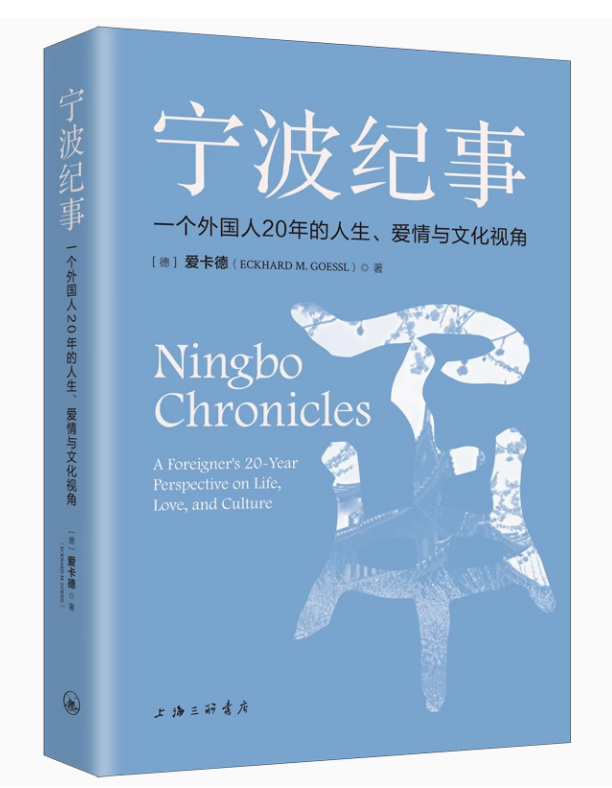- Details
-
Category: Ningbo News
-
Published: Friday, 11 November 2016 14:39
Book your Christmas Party Tickets right here right now and pay WeChat money.
Adventszeit und Weihnachten
By: Evelyn Groemminger

Christmas, or Weihnachten, is considered by Germans to be the most important of the major holidays. Although secularized and commercialized compared to Christmas celebrations of years before, the German holiday season is a time for celebration and family and friends. Not only the holiday itself, but also the weeks leading up to the celebration of Christmas involve many traditions and customs of diverse origins.
Advent (Latin for "arrival, coming") is the four-week period leading up to Christmas. In German-speaking countries and most of Europe the first Advent weekend is the traditional beginning of the Christmas season when open-air Christmas markets (Christkindlmärkte) appear in many cities, the most famous ones being those in Nuremberg and the Striezelmarkt in Dresden.
Advent officially begins on the first Sunday after Nov. 26. Four Advent Sundays lead up to Christmas.
Now it is the time for the Advent wreath (Adventskranz) which is adorned with four candles, one of which is lit on each of the four Sundays preceding Christmas.
The Christmas pyramid ( Weihnachtspyramide ),
originally from the Erzgebirge region of Germany, the wood or rope pyramid was the "poor man's Christmas tree." Today it is a popular Christmas decoration in many parts of Germany, often adorning window sills, usually made with candles and bells that ring as the heat from the candles turns a wooden rotor at the top.
During the four weeks before Christmas, Germans celebrate Advent, a romantic and delightful time of the year, which is strongly linked to traditional Christmas markets in wonderful settings. You'll find plenty of hand-crafted Christmas decorations, cute little incense burners, wooden-carved toys and nativity scenes to place at the heart of your Christmas display. Germany's first Christmas market was recorded in 1393, and today there are thousands of them all over the country.
The town squares, normally dark early in winter months, are lit up and buzzing with activity during this time. Townspeople gather together, listen to brass band music, drink beer or hot mulled wine (Glühwein) or apple cider, and enjoy the hearty traditional fare of the region. Vendors peddle baked goods, including gingerbread hearts, sugar-roasted almonds, crepes, cookies, stollen, cotton candy and other sweets. Christmas tree decorations, seasonal items, and handcrafted articles, such as wooden toys and hand-blown glass ornaments, are also sold.
Both gingerbread houses and the Nutcracker came from German stories. Before the Nutcracker became a Tchaikovsky ballet, he was the hero of an 1816 story by Berlin's Ernst Theodor Amadeus (E.T.A.) Hoffman. The gingerbread house first appeared in the Grimm brothers' tale of Hänsel and Gretel, then in Humperdinck's short opera which premiered on December 23, 1893. Gingerbread has quite a history on its own. It dates back to ancient Egypt. But it was in Nuremberg in 1643 that gingerbread bakers were first allowed to form their own trade guild. They developed export markets, and today, one Nuremberg exporter produces about three million pieces of gingerbread per day in the months before Christmas, for shipment around the world.
Another Christmas tradition is the Advent calendar, first printed in Germany in 1908. The Adventskalender with its 24 windows, helps children count down to Christmas Eve (Heiligabend), beginning on 1st of December.
Small treats are hidden behind little paper doors for the 24 days until Christmas.
Read more: Christmas is already around the...
- Details
-
Category: Ningbo News
-
Published: Friday, 11 November 2016 14:14
The 2016 Coastal Joy Running activity, the last major event of the 1st International Coastal Amusement Festival, which has been started since April this year, was held on November 6 at the newly completed Sports Park of the Hangzhou Bay New Zone of Ningbo. At nine in the morning, 3000 runners from 11 countries or regions including Canada, Brazil, France, Italy, South Korea and China attended the race on the colorful jogging path of the park. The theme of this event is "slow pace, sports, joy and love".
The Sports Park, the starting point of this race, is itself a major project for production-city integration and "colorful life scheme". The 3889-meter long colorful jogging path, with an investment of 13.04 million yuan, is also a major project of the construction of the international coastal town. The joy running route, integrating the Sports Park, the jogging path, the Guantang Lake, and such ecological elements as ginkgo and reed catkins, reflects the image of the town of health and ecology.
Read more: 1st International Coastal Amusement...











